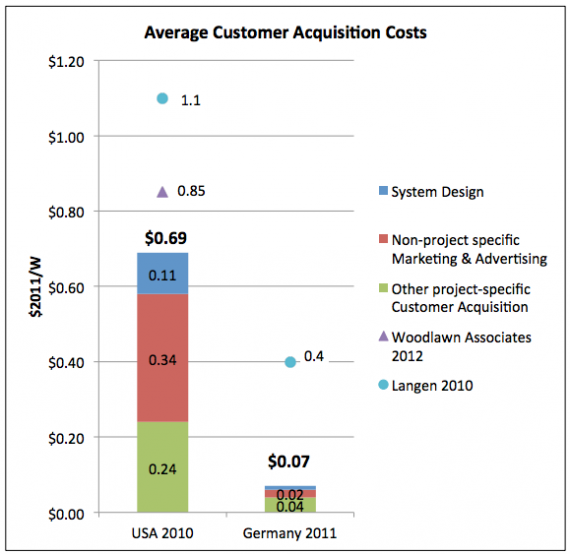
Date: 2025-10-15 Page is: DBtxt003.php txt00004336
Energy
Solar Power Systems in New Jersey
Why are systems for schools in New Jersey costing so much? The case of the Board of Education in Franklin Township, New Jersey
Burgess COMMENTARY
These brief notes are for discussion ... March 25, 2013
Peter Burgess
On Friday, March 22nd, I attended a pre-bid briefing meeting for contractors considering responding to a Request for Proposal (RFP) for a solar installation at a school in New Jersey. There were about 16 people attending the briefing from about eight different contractors. In addition to the few words of explanation about the RFP process, we were allowed to look at the electrical switchgear in the school, and then took a walk to where the solar system was to be located. The whole meeting and walk-around took about an hour.
The simple take-away questions from this meeting were:
- Why was it necessary to have an RFP document that was almost 300 pages long?
- Why were the contractors expected to include an amount of $90,000 in the proposal to cover the cost of consultants handling the RFP process for the school district?
- Why were probably the most important information for a responsible proposal … the current consumption of electricity and the current cost of electricity is not yet available for the proposal preparers.
In a report prepared by Joachim Seel, Galen Barbose, and Ryan Wiser for the Lawrence Berkeley National Laboratory (see a pdf summary of the report) the question why customer acquisition costs in the United States are so much higher in the United States than they are in Germany. They include the following graphic which shows a cost of just 7 cents per Watt in Germany compared to 69 cents per Watt in the United States.

My impression was that for a project as simple as the one being contemplated by this New Jersey school district, there was no technical need for either the 200 page RFP, nor the $90,000 consulting costs.
There was a time when the United States was an efficient economy ... but it seems that those days are long gone. It seems that the process is now more legal with law and regulation dominating over technical and constraining practical best practice.
While the 'process' is onerous, in the end the accountability is still weak. The idea that the $90,000 to do the 'RFP process' is not going to cost the school district any money if the amount is buried in the contracvtor's proposals is at face value preposterous ... yet that is what the contractors were told.
What to do?
See a pdf version of the Franklin Township Board of Education Request for Proposal (TVM website archive'